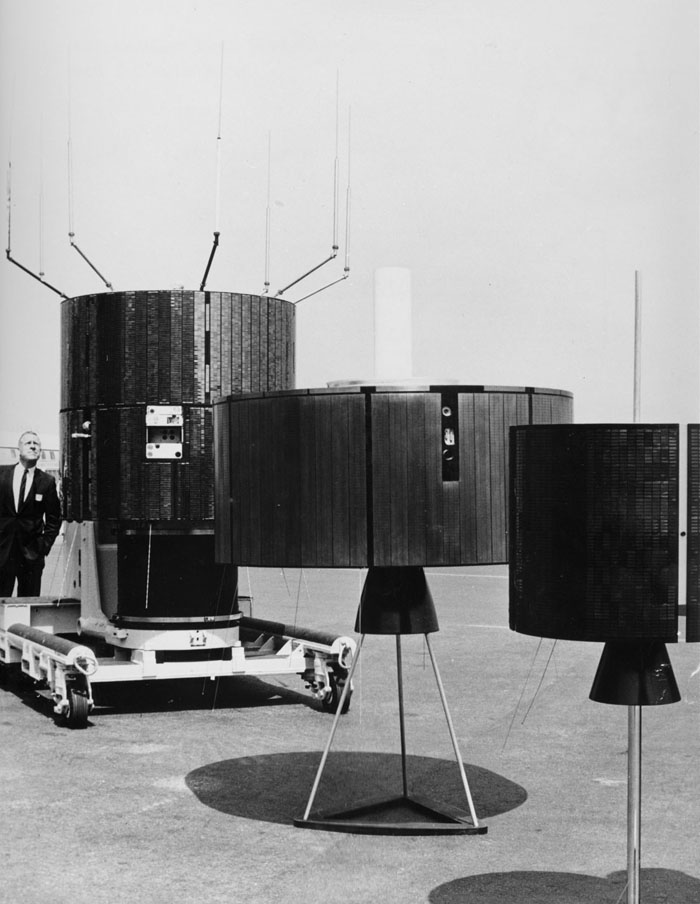Space History Photo: Olympic Game Communication Satellite "Birds"

In this historical photo from the U.S. space agency, the replicas of the covey (flock) of synchronous communication satellites that were used to televise the 19th Olympic Games from Mexico City to audiences in Europe and Japan. The satellites are shown at Hughes Aircraft Company, Culver City, California, where they were built for NASA and Comsat Corporation.
In the center is a full- scale model of the Intelsat II satellite, which was used by Comsat to send color TV direct to Japan via a Hughes ground station installed near San Jose, California. Left of Intelsat is the NASA's ATS-3 (Application Technology Satellites), which transmitted the picture portion of the Olympics to Europe and the Early Bird (right) transmitted the voice commentary of the European telecast in a dozen languages.
These communication satellites went into orbit over the Atlantic in April 1965.
Each weekday, SPACE.com looks back at the history of spaceflight through photos (archive).
Get the Space.com Newsletter
Breaking space news, the latest updates on rocket launches, skywatching events and more!
Join our Space Forums to keep talking space on the latest missions, night sky and more! And if you have a news tip, correction or comment, let us know at: community@space.com.

The National Aeronautics and Space Administration (NASA) is the U.S. government agency in charge of the civilian space program as well as aeronautics and aerospace research. Founded in 1958, NASA is a civilian space agency aimed at exploring the universe with space telescopes, satellites, robotic spacecraft, astronauts and more. The space agency has 10 major centers based across the U.S. and launches robotic and crewed missions from the Kennedy Space Center in Cape Canaveral Florida. It's astronaut corps is based at the Johnson Space Center in Houston. To follow NASA's latest mission, follow the space agency on Twitter or any other social channel, of visit: nasa.gov.









